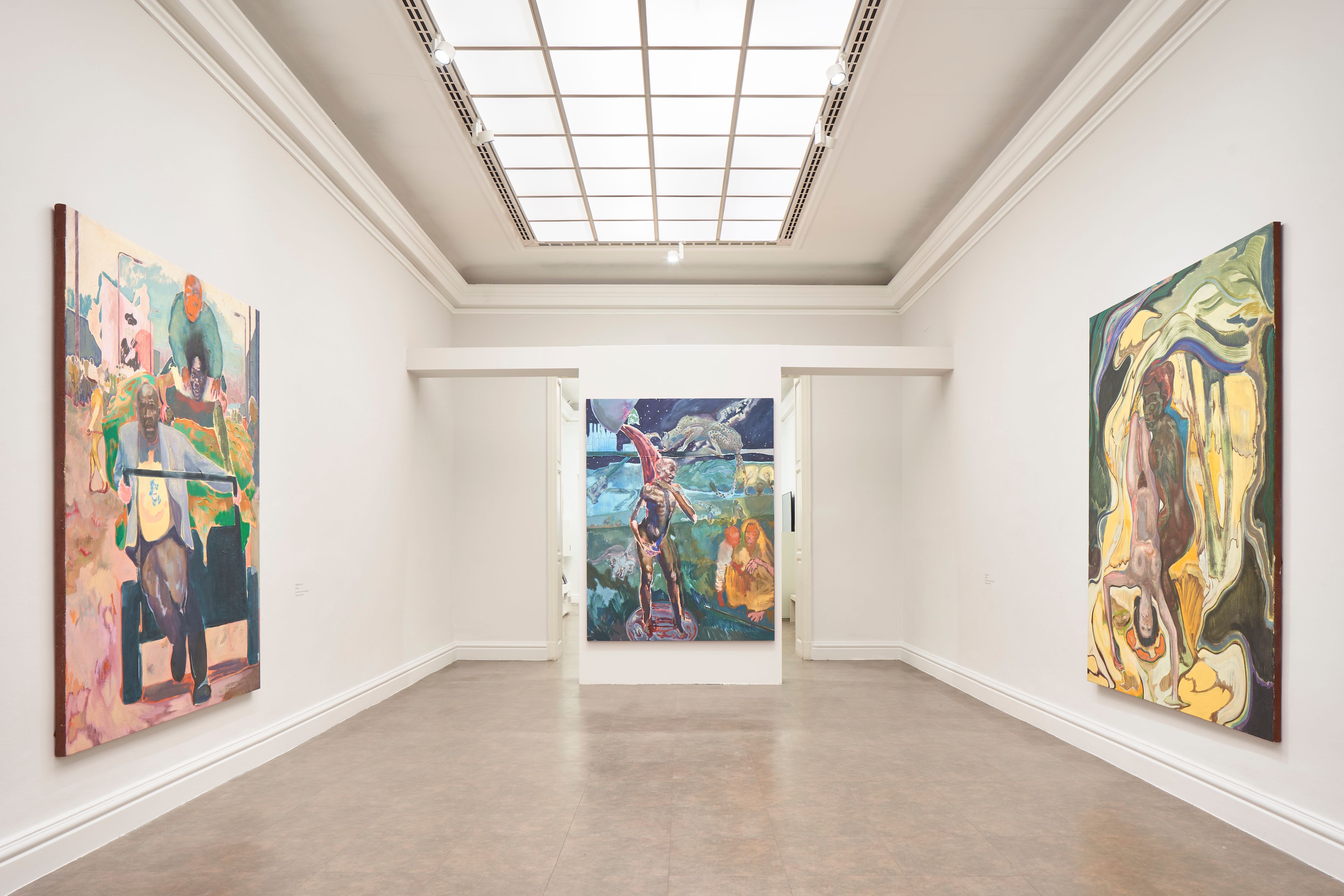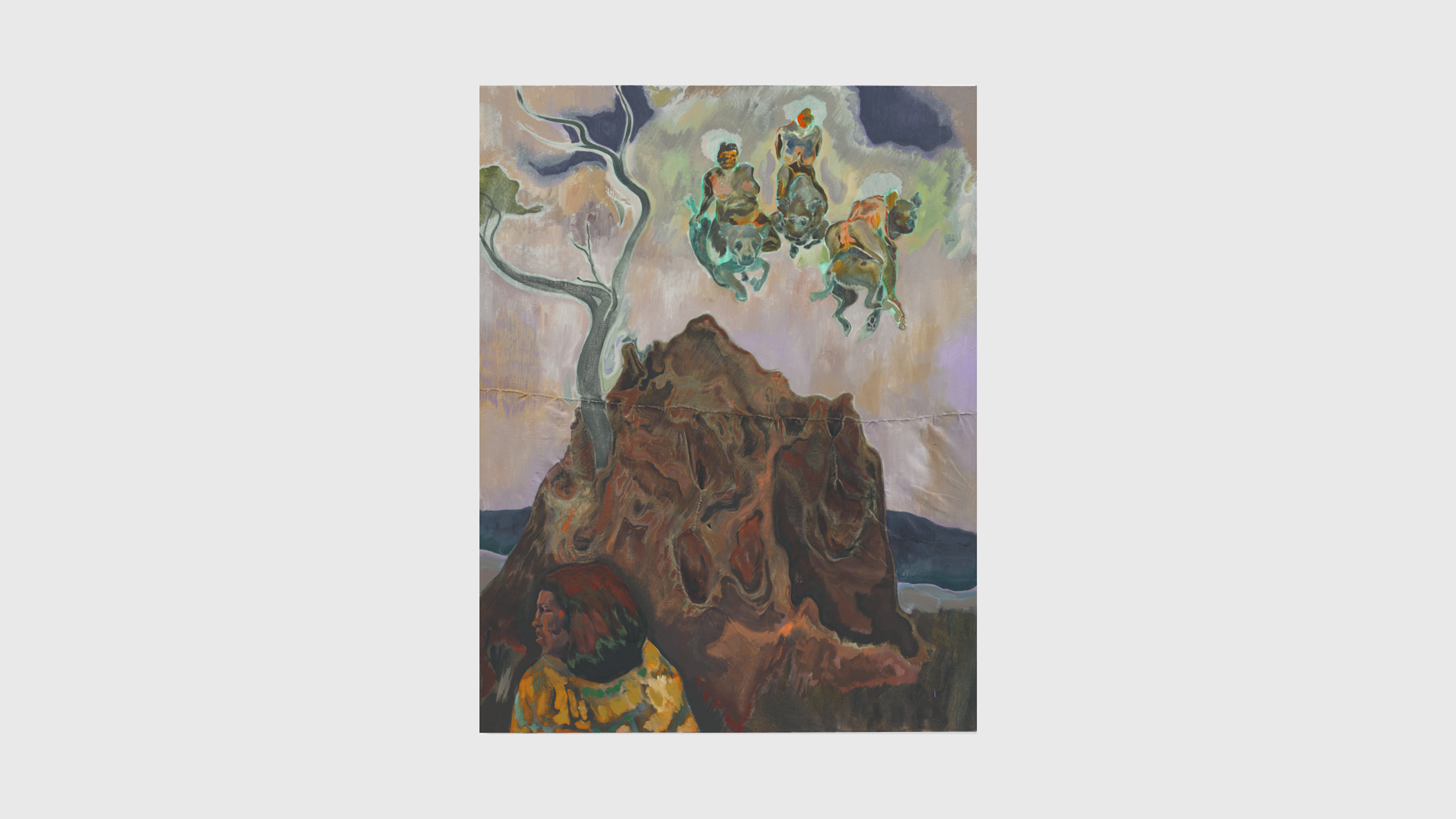Calcografía Nacional at La Real Academia de Bellas Artes de San Fernando, Madrid
February 2022
February 4–March 1, 2022 Michael Armitage is the artist’s first solo exhibition in Spain, on view at the Calcografía Nacional at La Real Academia de Bellas Artes de San Fernando in Madrid. Curated by Hans Ulrich Obrist, the exhibition presents a dialogue between Armitage’s work and the work of Francisco de Goya, who is well represented in the permanent collection of the Academia. The artist will exhibit a total of nineteen artworks—five paintings and fourteen drawings—that resonate with Goya’s through their dreamlike, ambiguous, and supernatural undertones. The exhibition aims to shed light on the bonds between the two artists. “Although they work two centuries apart, they share meticulous observations of their respective periods,” Obrist explains. “In both Goya’s and Armitage’s work, there is a particular interest … in what concerns the individual in the socio-political context.” As Obrist observes, the study of how people behave as a mass—as seen in Goya’s paintings—also underpins Armitage’s practice, and direct and indirect references to Goya are constants in Armitage’s work. “Goya changed Armitage’s way of drawing, making him understand that you could do something apparently quickly but in fact built slowly ... Goya is always present in his work.” For his first solo show in Spain, the Kenyan-British artist will be exhibiting a total of nineteen artworks—five paintings and fourteen drawings. The works in the exhibition will be rounded off by screenings of Xala, a film by the late Senegalese director and political activist, Ousmane Sembène and the documentary Sembène: The Making of African Cinema by the professor, critic, and filmmaker Manthia Diawara. Both films address the social and political situation of Senegal, echoing the socio-political concerns found in Goya and Armitage’s work.



